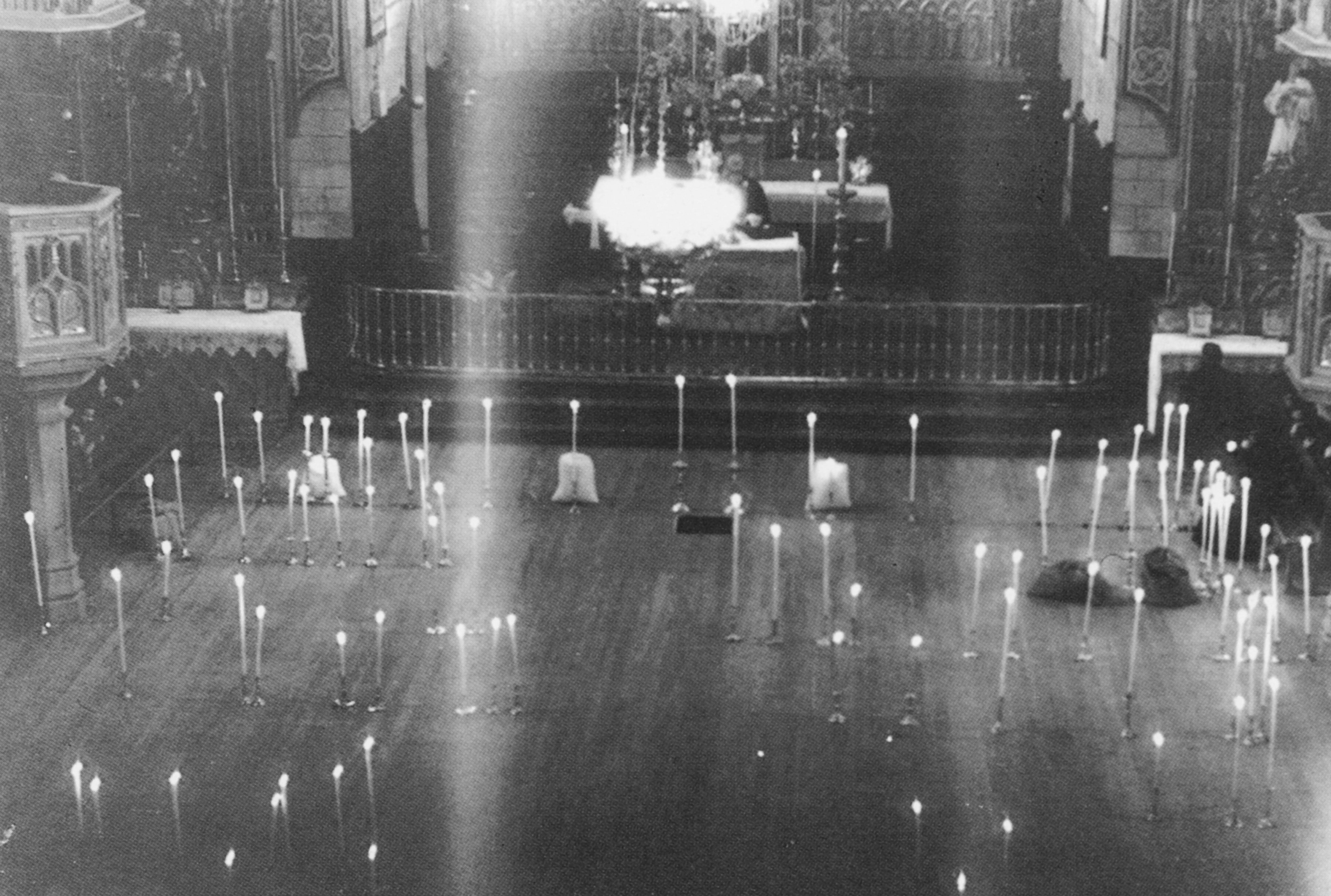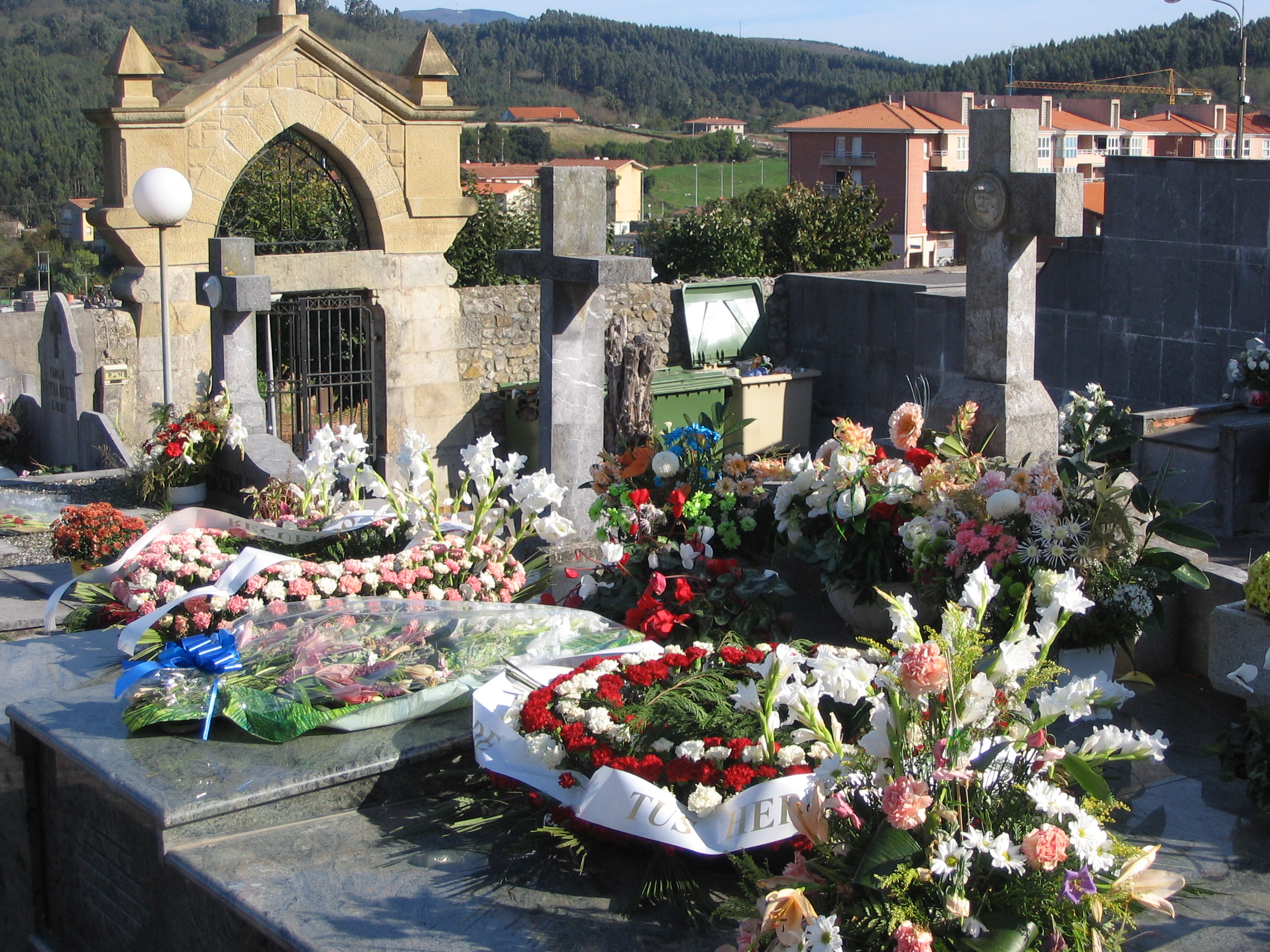Basque ethnography at a glance

Offerings on All Souls’ Day in Obanos (Nafarroa), 1972. José Ibáñez. Taken from Funeral Rites in the Basque Country.
There is a spiritual bond between the living and the dead in Christian tradition. Both belong to a single community: the former in the current world and the latter in the world to come. That is why our dead would be remembered at family mealtimes, such as Christmas Eve dinner, when saying grace and in diary prayers. A frequently used formula would be Por los que han salido de esta casa, which translates as ‘Let us remember the departed members of this household’.
The living members of a family dwelt in the house and their dead reposed in the grave. The house and the final resting place were connected. So much so that, according to custom, unbaptised infants were buried under the eaves of the house. Moreover, each family kept a place in church to lay out offerings for their dead which was considered an extension of the family house. In Bizkaia Charter the symbolic burial place in church was referred to as part of the family property, in other words, should the house be transferred or sold, the grave would follow the same fate.
All Saints’ Day, 1 November, and the day after, All Souls’ Day, bear particular significance in traditional culture. In the past mass was celebrated on the second day of patronage festivals in remembrance of the departed members of the community. There were also confraternities which offered memorialisation of their dead members on the occasions and dates stated in their statutes.

Urduliz Cemetery (Bizkaia), 2015. Akaitze Kamiruaga. Labayru Fundazioa Photographic Archive.
On All Saints’ Day the extended family would gather, and in many households still do, to attend mass for the dead relatives and have a meal. The custom these days is to visit cemeteries, now further away in larger urban locations. Graves and niches are decorated so that they shine in all their splendour on the big day. Formerly, offerings consisted of candles and oil lamps lit at the symbolic grave, echoing the earlier practice at the burial slabs inside the church. For some time now, though, floral tributes have become widespread: wreaths, grave pots and all sorts of flower arrangements.
Most deaths nowadays take place outside the house, in a hospital or a nursing home, and as a result, we are growing apart from the traditional way to approach the dying process and the idea of saying farewell before departure. Vigils and family meetings are no longer held at the house of the deceased, funeral homes serve the purpose now. Cremation, established itself as a widely accepted means of disposing of the body to the detriment of interment, and the scattering of cremated remains have to a great extent helped alter ancient funeral rites.
Segundo Oar-Arteta – Etniker Bizkaia – Etniker Euskalerria Groups
Translated by Jaione Bilbao – Language Department – Labayru Fundazioa
Reference for further information: Funerary Rites, part of the Ethnographic Atlas of the Basque Country collection.

